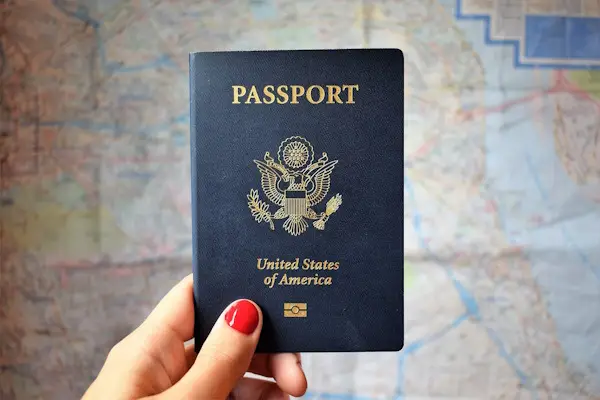

Starting in the first half of 2025, travellers heading to Europe will face new entry rules due to the introduction of ETIAS (European Travel Information and Authorisation System). This system is meant to enhance security and streamline entry into the Schengen Area countries. Understanding ETIAS is essential for anyone planning to visit Europe to ensure a smooth trip.
In this guide, we’ll cover everything you need to know about ETIAS, including what it is, which countries it applies to, who needs approval, how to apply, and other important details.
ETIAS, which stands for European Travel Information and Authorisation System, is a visa-waiver program requiring travellers from visa-exempt countries to get pre-approval before entering Europe. It’s an electronic authorisation meant to screen travellers before they arrive.
The main goal of ETIAS is to improve security across Europe. By pre-screening visitors, European authorities can identify potential risks, such as individuals linked to terrorism, serious crime, or other security threats, before they even set foot in a European country.
ETIAS is similar to the U.S. ESTA (Electronic System for Travel Authorization), which travellers to the United States from visa-free countries must also complete.

ETIAS applies to 30 European countries. Here’s a complete list of countries where you’ll need ETIAS approval:
If you travel to any of these countries, you’ll need an ETIAS authorisation to enter unless you are a citizen of the European Union (EU) or European Economic Area (EEA).
Do you use your laptop on public wi-fi when you travel? If you do you need to read my 8 Tips When Using Public Wi-Fi When Travelling article.
ETIAS applies to citizens of countries that currently enjoy visa-free travel to Europe. Over 60 countries are on this list, including the United States, United Kingdom, Canada, Australia, New Zealand, and Japan. If you’re from one of these visa-exempt nations, you must apply for and receive ETIAS approval before your trip.
If you’re a citizen of the European Union, the European Economic Area, or any of the Schengen countries, you won’t need ETIAS to travel within the area. However, residents of other non-EU countries will need to follow the new rules.

The ETIAS process is designed to be quick and user-friendly, especially compared to traditional visa applications. Everything is done online, and most applicants will receive a response within minutes. Here’s a step-by-step guide on how to apply:
To begin, you’ll need to go to the official ETIAS website or app. Be sure to use the official platform to avoid scams.
You will need to provide personal information such as:
You may also be asked for information about your travel history, including any countries you’ve visited, your reason for visiting Europe, and details about your accommodation.

ETIAS will also require you to answer some basic security-related questions. These will be used to screen for any prior criminal activity, links to terrorism, or connections to other serious crimes.
The ETIAS application fee is expected to be €7 (around $7–USD 8) and waived for travellers under 18 or over 70. Payment is made online using a credit or debit card.
The ETIAS system will usually process your application quickly—within minutes or hours. However, if further checks are needed, it may take up to 30 days. Once approved, you will receive an email notification, and your ETIAS will be electronically linked to your passport.
Once you have received your ETIAS, it will be valid for up to three years or until your passport expires, whichever comes first. You can enter the 30 European countries as often as you like during this time, but each stay must be no longer than 90 days within a 180-day period.

While the ETIAS system is fairly simple, there are a few essential rules and tips to keep in mind when planning your trip.
You Must Apply Before Traveling
ETIAS must be completed and approved before your trip to Europe. Don’t wait until the last minute. Remember, if additional checks are needed, approval can take up to 30 days.
Multiple Entries Are Allowed
With ETIAS, you can enter and leave Europe multiple times as long as you stick to the 90-day rule. This means you can travel freely between Schengen countries without reapplying.
It’s Linked to Your Passport
Your ETIAS authorisation is linked to your passport. If your passport expires or you renew it, you’ll need to apply for a new ETIAS with the updated passport information.
For Short Stays Only
ETIAS is for short-term tourism, business trips, family visits, or transit. It doesn’t cover long-term stays, work permits, or study visas. If you plan to stay in Europe for more than 90 days or for a reason other than tourism, you must apply for a different visa.
Travellers of All Ages Need ETIAS
Even minors (children under 18) and seniors (adults over 70) need to apply for ETIAS. However, both of these groups are exempt from paying the application fee.

ETIAS is being implemented to improve border security and ensure a higher level of safety for both European citizens and travellers. Europe has seen a rise in security concerns in recent years, and authorities want to prevent issues such as terrorism, illegal immigration, and organised crime. ETIAS gives Europe the ability to screen travellers from visa-exempt countries more effectively, identifying any potential risks before they arrive.
Additionally, ETIAS will help to streamline the travel process. Since travellers are pre-approved before they arrive, it can reduce wait times and hassle at European borders.
If you arrive in Europe without an ETIAS, you won’t be allowed to enter any Schengen Area countries. Airlines and border control officers will be checking your travel documents, including your ETIAS approval, before letting you proceed. Without it, you may be denied boarding at your departure airport or turned away at the border.
To avoid this situation, apply well in advance and keep a copy of your approval with you, either digitally or in print.
The introduction of ETIAS in the first half 2025 marks a significant change for travellers to Europe from visa-free countries. While it adds an extra step to the travel process, it’s designed to be quick, easy, and affordable. By applying for ETIAS online before your trip, you can ensure a smooth entry into Europe and enjoy all the sights, sounds, and experiences these European countries offer.
Be sure to apply early, follow the rules, and keep your travel documents up to date.
Safe travels!

Hi, I’m Lisa, a 50+ retired chartered accountant. My husband, Darren, and I explore the world every opportunity we get. Staying fit is key to our adventures, from hiking the Inca Trail to scuba diving. We call Australia home but travel overseas often, always eager to discover new cultures, bustling cities, cuisines, nature and wildlife.
We would love you to join us on our journeys and hope that our adventures give you encouragement to explore this amazing world.
Some of the links below are affiliate links, meaning, at no additional cost to you, I will earn a commission if you click through and make a purchase. This helps me to keep bringing you travel updates and news.
I only recommend companies and products that I personally use.
Explore the World with Us!
Join my newsletter for travel advice, tips and inspiration.




Stay informed about the new travel rules in Europe. Understand ETIAS, the new travel rules for Europe and its impact on your trip.

Ethical animal tourism is top of mind for many of us when we travel. So how do we tell if an animal encounter is ethical?

Is it worth it to pay for an airport lounge during a long layover? Explore the pros and cons and make a decision for your next trip.

If you are planning a trip overseas and you take medication, here are 7 guidelines to help when planning your trip.

So you struggle to save for a holiday? Follow these 5 steps to help you save for your next holiday and all your holidays after.
© 2024 The Middle Age Wanderer
Made with 